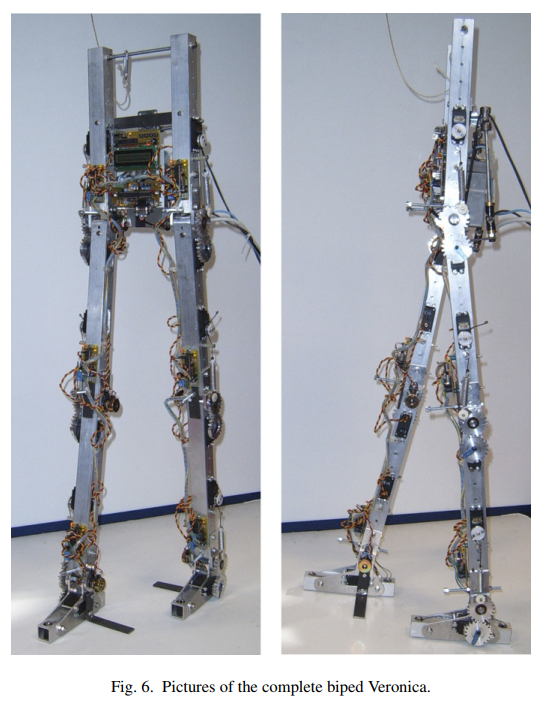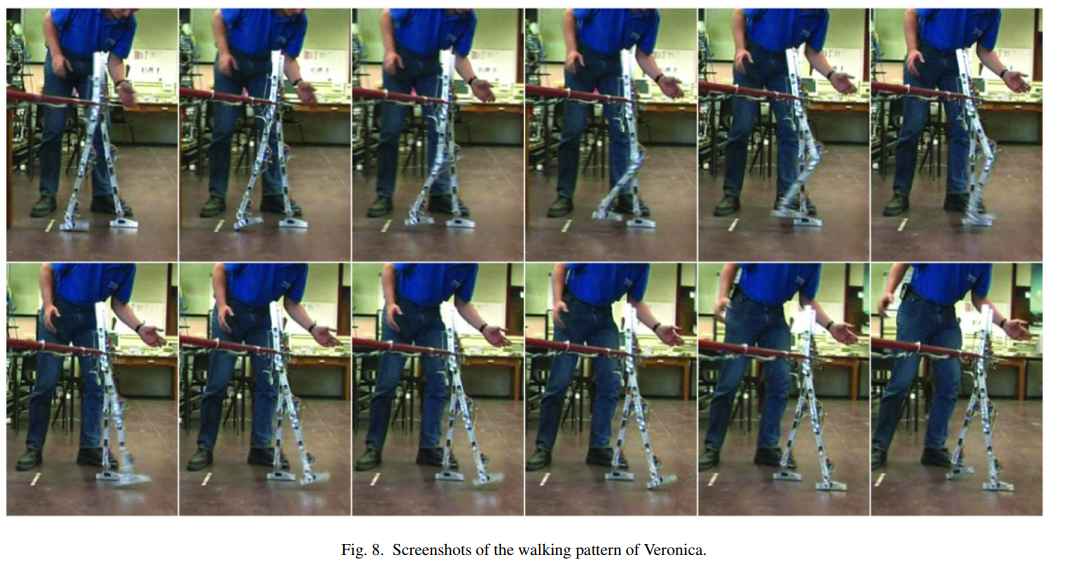R. Van Ham, B. Vanderborght, M. Van Damme, B. Verrelst and D. Lefeber (2006). "MACCEPA: the mechanically adjustable compliance and controllable equilibrium position actuator for 'controlled passive walking'
Summary
Main idea
Robots can be stiff and rigid, but that is not the only option that one has when creating a robot. In order to make robots move more human-like, a mechanism is introduced where actuators with "adaptive compliance" are created tested:
- “Nowadays, more and more research groups working on bipeds have started to believe that natural biped walking is a combination of both approaches, requiring actuators with adaptable compliance (inverse of stiffness), resulting in energy efficient walking at different speeds.”
- “Human joints are actuated by at least two muscle groups, giving them the possibility to change the stiffness of a joint and to control the equilibrium position. By controlling both the compliance and the equilibrium positions, a variety of natural motions is possible, requiring a minimal energy input to the system.”
Benefits
This approach is was created in order to achieve three main goals, namely:
- better energy efficiency
- better control over the force of robot "actions"
- better balance
Previous research
The paper then mentions some of the leading research regarding designs of adaptive compliance combined with actuators: University of Pisa, Italy, [1] the Variable Stiffness Actuator (VIA), Georgia Institute of Technology, USA, [2] a Biologically Inspired Joint Stiffness Control, North-western University, MARIONET [3]. These all describe mechanisms that use some elastic component to achieve features like human/animal joints.
Actuator shape
This design is evaluated in detail in the paper.

Robot model
An experimental design was built, named Veronica, for the purpose of showing the applications of this design. The robot is in the shape of humanoid legs, with 6 degrees of freedom:

Robot model testing
Although not yet fully functional, the robot managed to walk a small distance before falling:
